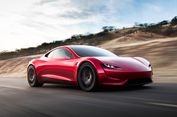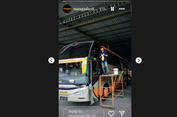Kia Attacks Light-Car Heavy Hitters
KOMPAS.com - Kia has abandoned its “cheap and cheerful” pitch for the Rio city runabout, increasing the asking price by almost 10 per cent in an attempt to move the nameplate upmarket.
The brand’s volume-selling hatch has been given a bold new look, an Australia-specific ride and handling tune and ambitious pricing that starts from $16,290 (plus on-road and dealer costs). That makes it more expensive than the market leading Mazda2, Toyota Yaris and Suzuki Swift.
Kia Motors Australia chief operating officer Tony Barlow says the Rio is no longer “a discounted runabout”, but part of a serious bid to “play in the [small car] big league”.
It follows the lead of other Kias, most notably the Sportage compact SUV and mid-size Optima sedan, in adopting a more stylish appearance and more accomplished road manners. The car will launch initially as a five-door, with three-door hatch and sedan variants arriving early next year.
The only problem for Kia, however, is the potential threat of supply constraints that continue to stifle the sales growth of the popular Sportage and Optima. The Rio is available in three familiar model grades: an entry-level S (from $16,290), mid-spec Si and SLi flagship (from $18,990 and $19,900 respectively). An automatic transmission is a $2000 option across the range.
The Rio S is powered by a 1.4-litre four-cylinder petrol engine and comes with the choice of either a standard six-speed manual or four-speed automatic. Featuring a conventional multipoint fuel-injection system, it develops 79kW of power, 135Nm of torque and uses 5.7 litres per 100 kilometres of fuel while emitting 135 grams of CO2 when mated to the manual (auto: 6.3L/100km and 150g).
The better-equipped Si and SLi variants are powered by a 1.6-litre “GDi” unit featuring direct injection to deliver a healthier 103kW and 167Nm. The more-advanced engine uses even less fuel than the 1.4: 5.6L/100km and 133g/km of CO2 with a manual (auto: 6.1L/100km and 145g). Both engines are more powerful and efficient than the outgoing model.
The new Rio is longer, lower and wider than its boxy predecessor with a 70mm-longer wheelbase for improved rear-seat space and cargo capacity. Despite this, Kia says the Rio continues to weigh between 1143kg and 1215kg.
Similar to the Sportage and Optima, the Rio benefits from Kia’s localisation program that involves a small group of local engineers tuning the car’s steering and suspension systems for more compliance and better driver dynamics for Australia’s varied and unforgiving road surfaces.
Modifications include a stiffer front sub-frame and larger engine and transmission mounts, to minimise noise and vibration, as well as a custom rear sway bar and shock absorbers.





































